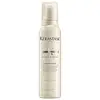What's inside
What's inside
 Key Ingredients
Key Ingredients

 Benefits
Benefits

 Concerns
Concerns

 Ingredients Side-by-side
Ingredients Side-by-side

Water
Skin ConditioningIsobutane
Propylene Glycol
HumectantPolyquaternium-4
Butane
Propane
PEG-40 Hydrogenated Castor Oil
EmulsifyingPhenoxyethanol
PreservativeLaureth-4
EmulsifyingCaprylyl Glycol
EmollientCalcium Pantothenate
Ethylhexyl Methoxycinnamate
UV AbsorberSafflower Glucoside
Arginine
MaskingGlutamic Acid
HumectantCetrimonium Chloride
AntimicrobialSerine
MaskingHexyl Cinnamal
PerfumingHydroxypropyltrimonium Hydrolyzed Wheat Protein
Skin ConditioningLinalool
PerfumingCitronellol
PerfumingAlpha-Isomethyl Ionone
PerfumingSodium Hyaluronate
Humectant2-Oleamido-1,3-Octadecanediol
Skin ConditioningGeraniol
PerfumingParfum
MaskingWater, Isobutane, Propylene Glycol, Polyquaternium-4, Butane, Propane, PEG-40 Hydrogenated Castor Oil, Phenoxyethanol, Laureth-4, Caprylyl Glycol, Calcium Pantothenate, Ethylhexyl Methoxycinnamate, Safflower Glucoside, Arginine, Glutamic Acid, Cetrimonium Chloride, Serine, Hexyl Cinnamal, Hydroxypropyltrimonium Hydrolyzed Wheat Protein, Linalool, Citronellol, Alpha-Isomethyl Ionone, Sodium Hyaluronate, 2-Oleamido-1,3-Octadecanediol, Geraniol, Parfum
Alcohol Denat.
AntimicrobialHydrofluorocarbon 152a
Octylacrylamide/Acrylates/Butylaminoethyl Methacrylate Copolymer
Glycerin
HumectantPanthenol
Skin ConditioningMacrocystis Pyrifera Extract
Skin ConditioningHelianthus Annuus Seed Oil
EmollientCaviar Extract
Skin ConditioningAlaria Esculenta Extract
Skin ProtectingHydrolyzed Pearl
Skin ConditioningHydrolyzed Keratin
HumectantKeratin
Skin ConditioningSaccharomyces/Magnesium Ferment
Saccharomyces/Copper Ferment
Skin ConditioningSaccharomyces/Silicon Ferment
Skin ConditioningSaccharomyces/Zinc Ferment
Skin ConditioningSaccharomyces/Iron Ferment
Skin ConditioningPolysilicone-15
UV FilterBiotin
AntiseborrhoeicPhospholipids
Skin ConditioningSuperoxide Dismutase
AntioxidantSea Salt
AbrasivePentaerythrityl Tetracaprylate/Tetracaprate
EmollientAscorbic Acid
AntioxidantAminomethyl Propanol
BufferingButylene Glycol
HumectantWater
Skin ConditioningPPG-5-Ceteth-20
EmulsifyingCyclopentasiloxane
EmollientPEG/PPG-17/18 Dimethicone
EmulsifyingPhenyl Trimethicone
Skin ConditioningTriethyl Citrate
MaskingTocopherol
AntioxidantPhenoxyethanol
PreservativePotassium Sorbate
PreservativePPG-12 Dimethicone
Skin ConditioningParfum
MaskingAlcohol Denat., Hydrofluorocarbon 152a, Octylacrylamide/Acrylates/Butylaminoethyl Methacrylate Copolymer, Glycerin, Panthenol, Macrocystis Pyrifera Extract, Helianthus Annuus Seed Oil, Caviar Extract, Alaria Esculenta Extract, Hydrolyzed Pearl, Hydrolyzed Keratin, Keratin, Saccharomyces/Magnesium Ferment, Saccharomyces/Copper Ferment, Saccharomyces/Silicon Ferment, Saccharomyces/Zinc Ferment, Saccharomyces/Iron Ferment, Polysilicone-15, Biotin, Phospholipids, Superoxide Dismutase, Sea Salt, Pentaerythrityl Tetracaprylate/Tetracaprate, Ascorbic Acid, Aminomethyl Propanol, Butylene Glycol, Water, PPG-5-Ceteth-20, Cyclopentasiloxane, PEG/PPG-17/18 Dimethicone, Phenyl Trimethicone, Triethyl Citrate, Tocopherol, Phenoxyethanol, Potassium Sorbate, PPG-12 Dimethicone, Parfum
Ingredients Explained
These ingredients are found in both products.
Ingredients higher up in an ingredient list are typically present in a larger amount.
Parfum is a catch-all term for an ingredient or more that is used to give a scent to products.
Also called "fragrance", this ingredient can be a blend of hundreds of chemicals or plant oils. This means every product with "fragrance" or "parfum" in the ingredients list is a different mixture.
For instance, Habanolide is a proprietary trade name for a specific aroma chemical. When used as a fragrance ingredient in cosmetics, most aroma chemicals fall under the broad labeling category of “FRAGRANCE” or “PARFUM” according to EU and US regulations.
The term 'parfum' or 'fragrance' is not regulated in many countries. In many cases, it is up to the brand to define this term.
For instance, many brands choose to label themselves as "fragrance-free" because they are not using synthetic fragrances. However, their products may still contain ingredients such as essential oils that are considered a fragrance by INCI standards.
One example is Calendula flower extract. Calendula is an essential oil that still imparts a scent or 'fragrance'.
Depending on the blend, the ingredients in the mixture can cause allergies and sensitivities on the skin. Some ingredients that are known EU allergens include linalool and citronellol.
Parfum can also be used to mask or cover an unpleasant scent.
The bottom line is: not all fragrances/parfum/ingredients are created equally. If you are worried about fragrances, we recommend taking a closer look at an ingredient. And of course, we always recommend speaking with a professional.
Learn more about ParfumPhenoxyethanol is a preservative that has germicide, antimicrobial, and aromatic properties. Studies show that phenoxyethanol can prevent microbial growth. By itself, it has a scent that is similar to that of a rose.
It's often used in formulations along with Caprylyl Glycol to preserve the shelf life of products.
Water. It's the most common cosmetic ingredient of all. You'll usually see it at the top of ingredient lists, meaning that it makes up the largest part of the product.
So why is it so popular? Water most often acts as a solvent - this means that it helps dissolve other ingredients into the formulation.
You'll also recognize water as that liquid we all need to stay alive. If you see this, drink a glass of water. Stay hydrated!
Learn more about Water